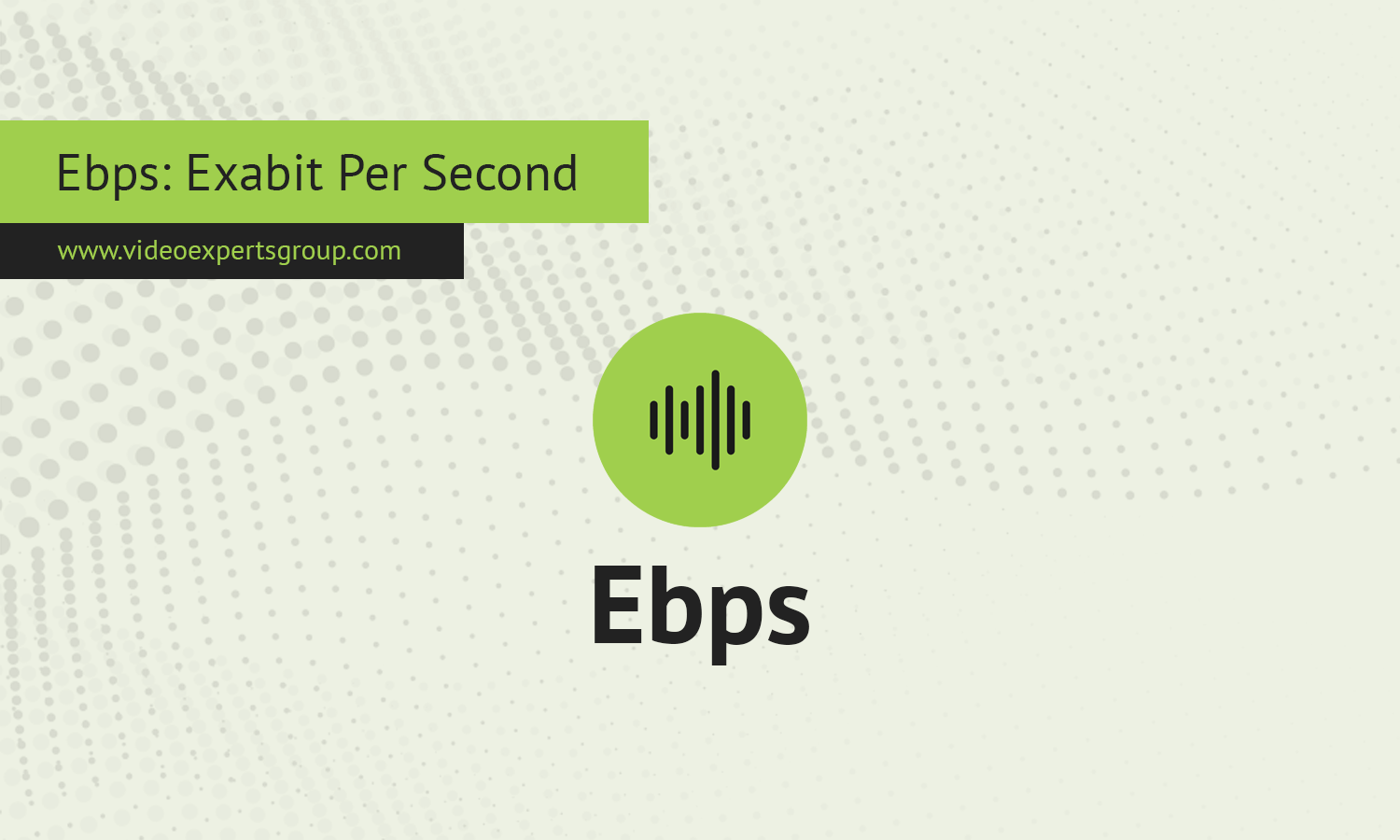The exponential growth of data generation and consumption has driven the need for faster data transfer speeds. Modern technology, from cloud computing to AI applications, relies on quick and efficient data flow. One term that represents an ultra-high data rate is "Exabit per second" (Ebps), a unit that quantifies the transfer of colossal amounts of data in the shortest possible time. While this unit is not yet widely used in most consumer applications, it plays a crucial role in advanced data infrastructure and supercomputing.
Meaning of Ebps
Ebps stands for "Exabit per second," where "Exabit" is a measure of data equivalent to bits (or one quintillion bits). When paired with "per second," this unit refers to the rate at which one exabit of data is transmitted or received in one second. To give context, an exabit is 1,000 petabits (Pbps) or 1 million terabits (Tbps), making it an extremely large measure of data throughput.
Ebps is used in scenarios where vast amounts of data need to be transferred at exceptionally high speeds, often in supercomputing, high-performance data centers, and advanced communication networks. In these areas, Exabit per second speeds would support data-heavy applications such as real-time global simulations, AI training, or future 6G networks.
Conversion Table
This table includes conversions from bits per second (bps) to tebibytes per second (TiBps), along with an additional column for bytes per second (Bps), making it easier to understand how these units relate to each other.
| Unit | Bit per second | Byte per second |
|---|---|---|
| 1 bit per second (bps) | 1 bps | 0.125 Bps |
| 1 kilobit per second (Kbps) | 1,000 bps | 125 Bps |
| 1 megabit per second (Mbps) | 1,000,000 bps | 125,000 Bps |
| 1 gigabit per second (Gbps) | 1,000,000,000 bps | 125,000,000 Bps |
| 1 terabit per second (Tbps) | 1,000,000,000,000 bps | 125,000,000,000 Bps |
| 1 petabit per second (Pbps) | 1,000,000,000,000,000 bps | 125,000,000,000,000 Bps |
| 1 exabit per second (Ebps) | 1,000,000,000,000,000,000 bps | 125,000,000,000,000,000 Bps |
| 1 byte per second (Bps) | 8 bps | 1 Bps |
| 1 kilobyte per second (KBps) | 8,000 bps | 1,000 Bps |
| 1 megabyte per second (MBps) | 8,000,000 bps | 1,000,000 Bps |
| 1 gigabyte per second (GBps) | 8,000,000,000 bps | 1,000,000,000 Bps |
| 1 terabyte per second (TBps) | 8,000,000,000,000 bps | 1,000,000,000,000 Bps |
| 1 kibibyte per second (KiBps) | 8,192 bps | 1,024 Bps |
| 1 mebibyte per second (MiBps) | 8,388,608 bps | 1,048,576 Bps |
| 1 gibibyte per second (GiBps) | 8,589,934,592 bps | 1,073,741,824 Bps |
| 1 tebibyte per second (TiBps) | 8,796,093,022,208 bps | 1,099,511,627,776 Bps |
Pros of Ebps
-
Massive Data Handling
Ebps allows for the transmission of immense amounts of data in real-time, which is essential for industries like AI, scientific research, and cloud computing. It can handle vast datasets that traditional systems struggle with. -
Improved Efficiency
Data centers and large-scale operations rely on high-speed data transfers. With Ebps, the time taken to move data between servers or even across continents is dramatically reduced, leading to better efficiency and reduced bottlenecks in network operations. -
Future-Proofing
As global data consumption continues to grow, Ebps offers a way to prepare for future demands. When the world moves towards technologies like 6G or exascale computing, Ebps will be the necessary foundation for these advancements. -
Low Latency in High-Speed Applications
For advanced technologies such as autonomous vehicles, remote surgeries, and virtual reality (VR), minimizing latency is critical. Ebps would ensure that data transmission happens with minimal delay, supporting these latency-sensitive applications.
Cons of Ebps
-
Infrastructure Demands
Achieving Ebps speeds requires substantial infrastructure upgrades. Current communication systems and hardware do not yet support such high speeds, meaning expensive overhauls are needed for both physical and wireless networks. -
Energy Consumption
Handling such vast quantities of data at Ebps speeds would consume a significant amount of energy. Data centers, routers, and transmission networks operating at these rates would need to be highly energy-efficient to avoid unsustainable power consumption. -
Limited Use Cases
While Ebps is beneficial for cutting-edge industries, the majority of consumer and business applications do not require such high speeds. For most internet users and companies, speeds measured in Gbps (gigabits per second) or even Tbps are more than sufficient, making Ebps relevant only in specialized fields. -
Cost
The costs associated with upgrading infrastructure to support Ebps are enormous. Building networks capable of sustaining such speeds requires massive investment in fiber optics, high-capacity servers, and advanced processing equipment, limiting its deployment to elite or government-funded projects.
Ebps (Exabit per second) represents the next frontier in data transfer speeds. While its practical applications are still limited to niche areas of technology, it provides a glimpse into the future of high-speed communications. As data demands grow, Ebps could become the standard for supporting advanced computing, scientific research, and next-generation networks. However, widespread adoption will depend on overcoming significant challenges, including cost, infrastructure, and energy efficiency.
















